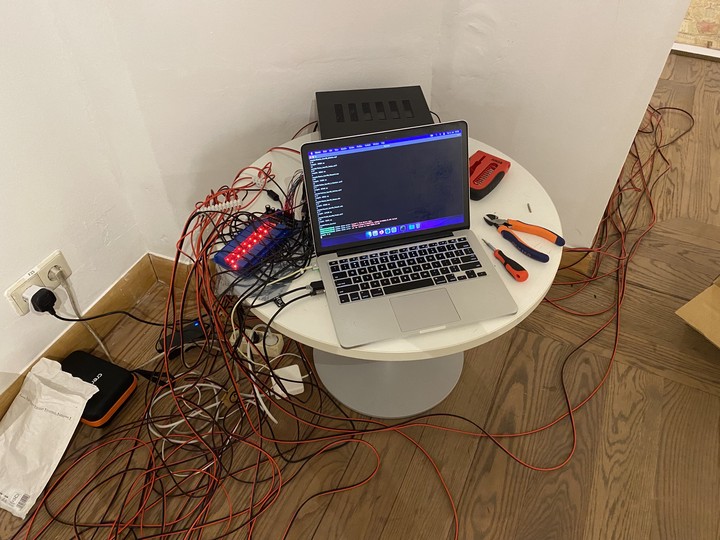Les voi.es.x de la carte / Tonkörper Berlin
Borders according to Instagram

The collective exhibition “Les voi.es.x de la carte / Tonkörper Berlin” relates cartographic works on the city of Berlin to a sound sculpture made of interviews, literary texts and city sounds. The basis is formed by research projects from the Centre Marc Bloch: models of a city that invite an examination of various social designs.
https://lesvoiesxdelacarte.eu/
I was happy to participate in this event, both by taking part in the exhibition but also creating a soundscape and building the overall sound installation. It was a lot of fun.
https://lesvoiesxdelacarte.eu/les-frontieres-selon-instagram-de/
Discovering “natural” geographic spaces and scales using Instagram data. How can space be mapped through the daily movements of the people who inhabit it? Can they reveal natural regions or areas of daily life? Instagram is best known as a social network for sharing photos, but they are often geotagged - tracking the successive locations of their creators, allowing different geographic locations to be connected. In practice, we have collected millions of photos from multiple countries and metropolitan areas to create graphs that link locations based on the number of users who have spent time together there. Using a statistical grouping method called community detection, we then used these graphs to divide geographic spaces into regions where users tended to spend the most time.
We validated our method by attempting to partition Belgium into two regions. The obtained partition corresponded exactly to the two major linguistic communities of the country (French-speaking and Dutch-speaking). Nevertheless, does this partitioning depend on the spatial scale considered and does it remain stable when other scales of movement, e.g. shorter distances, are studied? Contrary to much of the literature, which assumed that human movements do not depend on the scale considered, we made a surprising observation: when we gradually increased the spatial scale at which movements operate, we found a small number of typical partitions (between two and three). In other words, the resulting partition remains relatively constant over a small number of spatial scale intervals, while undergoing strong phase transitions between these intervals. A phase transition is an idea from physics where the linear change of a variable leads to a sudden discontinuity (ex: water freezing). We invite you to observe the natural scales of partitions associated with human movements for different cities and countries.
This work was published in the journal Scientific Reports in 2017.
Soundscapes generated from outdoor recordings of the author in the streets of Berlin. An attempt to represent auditory “zoom-outs” of human interactions, and also increasing levels of abstraction. Superimposed sounds and granular synthesis, composed with Ableton Live.